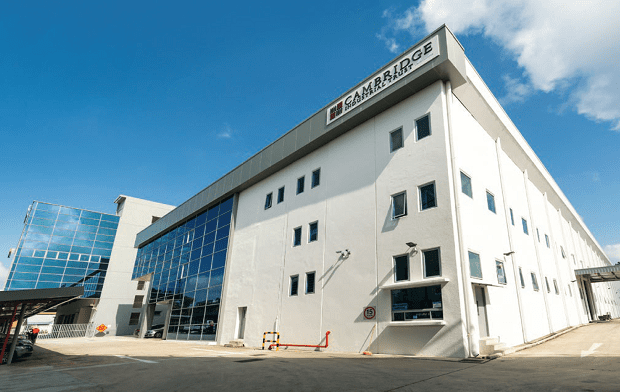
Cambridge Industrial Trust (CIT; SGX: J91U) is an industrial REIT with a portfolio of 49 industrial, logistics, and warehousing properties located in Singapore. The properties have a total net lettable area of 7.7 million square feet. As at 31 December 2016, its portfolio was worth $1.35 billion.
It has been a period of transition for CIT. CEO Philip Levinson resigned in November 2016 which was closely followed by the retirement of Chairman Dr Chua Yong Hai at the end of the year. Mr Ooi Eng Peng immediately took on the role of chairman while the new CEO, Adrian Chui, was only appointed in March 2017.
In January 2017, e-Shang Redwood (ESR) acquired an 80% stake in the manager of CIT. ESR also holds a 12% interest in CIT and is effectively now its sponsor and second largest shareholder. ESR is one of the largest logistics real estate developers, owners and operators in Asia with over US$5 billion in assets under management across China, Japan, and South Korea.
As Singapore industrial rents and occupancies continue to slide, what are CIT’s plans for its strategic partnership with ESR? I went to the AGM to find out more.
Here are 8 things I learned from Cambridge Industrial Trust’s 2017 AGM.
- Gross revenue remained flat at $112.1 million and net property income (NPI) fell 4.5% year-on-year to $82.3 million. Distribution per unit likewise fell 5.7% to 4.173 cents. NPI fell due to a number of single-tenanted master leases that were not renewed and subsequently converted to multi-tenanted leases. COO/CFO Shane Hagan explained that master leases are typically on a triple net lease where the tenant pays land rent, property tax, and maintenance, while a multi-tenanted lease is usually on a gross lease (which charges a higher rent) but the aforementioned expenses are covered by CIT. He revealed that, in some cases, the gross rent after expenses have fallen below the triple net rents thereby impacting CIT’s NPI.
- CIT will consider an asset’s flexibility as a single and multi-tenant property before it acquires it. The COO explained that while single tenants offer stable, long-term leases, they usually require unique specifications for the property. In the event a single tenant fails to renew its lease and CIT can’t find a replacement, the property should have the specifications to convert itself into a multi-tenant property in an efficient manner and achieve largely the same rents.
- Portfolio occupancy is at 94.7% which is higher than the industry average of 89.5%. CIT managed to retain 88% of tenant leases that were expiring in 2016. CIT’s weighted average lease expiry remained steady at 3.7 years.
- CIT completed two divestments in 2016. 23 Tuas Lane 10 was sold for $16.5 million – a price that was 5% above valuation and 93% above CIT’s original purchase price. 2 Ubi View was sold for $10.5 million – 6% above valuation and 40% above CIT’s original purchase price. The COO explained that the properties were no longer considered core assets due to outdated property specifications and/or poor competitive locations that caused a reduction in income. If the management can see an improvement in the property due to these issues, they will look it divest it.
- Gearing ratio is at 37.5%. All-in cost of debt is 3.71% with a weighted average debt expiry of 3 years. 90% of CIT’s borrowings are at fixed interest rates for the next three years and all of CIT’s properties are unencumbered (mortgage-free). Moving forward, CIT has no major refinancing needs until 2H 2018.
- A couple of unitholders wanted to know more about CIT’s partnership with ESR and whether CIT will start expanding outside of Singapore due to ESR’s network in Asia. Chairman Ooi Eng Peng said that it’s an advantage having ESR as sponsor as they develop and operate assets on a large scale. He revealed that CIT is working closely ESR and is looking at “all options” to add value to CIT for the benefit of all unitholders. There are internal discussions going on but the chairman said that he couldn’t give a direct answer at the moment. When a unitholder pointed out that his answer was very vague, the chairman replied that ESR had just joined in January. To be fair, they need time to do a proper assessment and to work things through.
- CEO Adrian Chui shared that CIT is looking to rebrand itself as ESR REIT. He said ESR has built a reputable name over the years and the fact that they trust CIT to use its name is a huge show of commitment from the sponsor. Besides ESR’s financial investment and “putting their money where their mouth is”, ESR is also behind CIT reputationally. The renaming is currently pending approval.
- A unitholder pardoned himself for his rudeness and commented that they were many different nationalities on the board including “ang mohs” and a Japanese. As CIT has its entire portfolio in Singapore, he asked what the different nationalities brought to the table. The board laughed and took his comment in good stride. The chairman said his directors have the credentials and years of industry experience in Singapore and Asia. He quipped, “If you add up their number of years here [in Singapore], some of them can be called local, it’s just that they look different!” The CEO added the directors’ nationalities were not important; it’s the experience and diversity they bring to the board that matters. Besides their local exposure, the directors also have international experience which will be important if CIT one day decides to venture overseas.
Liked our analysis of this AGM? Click here to view a complete list of AGMs we’ve attended »



